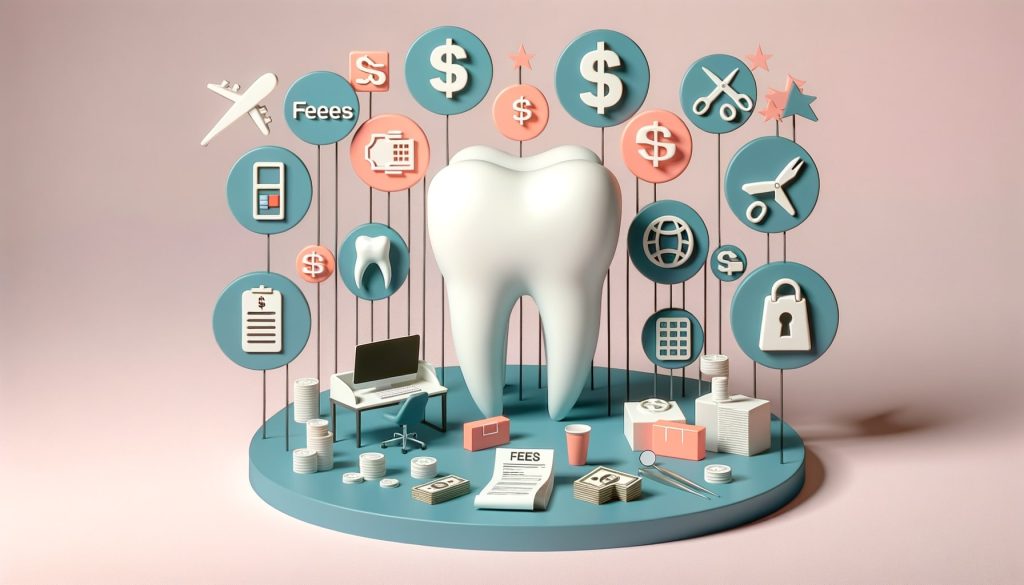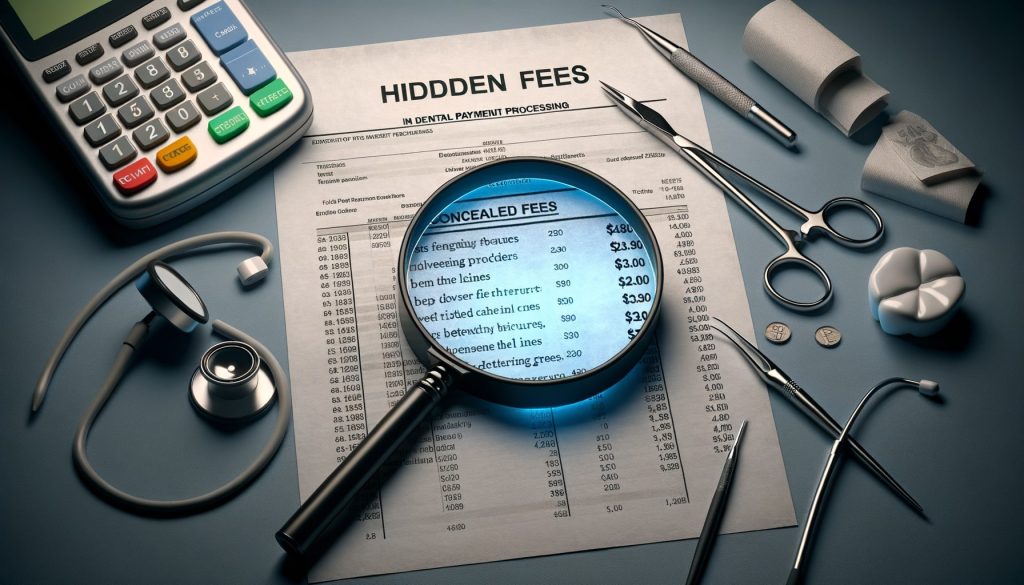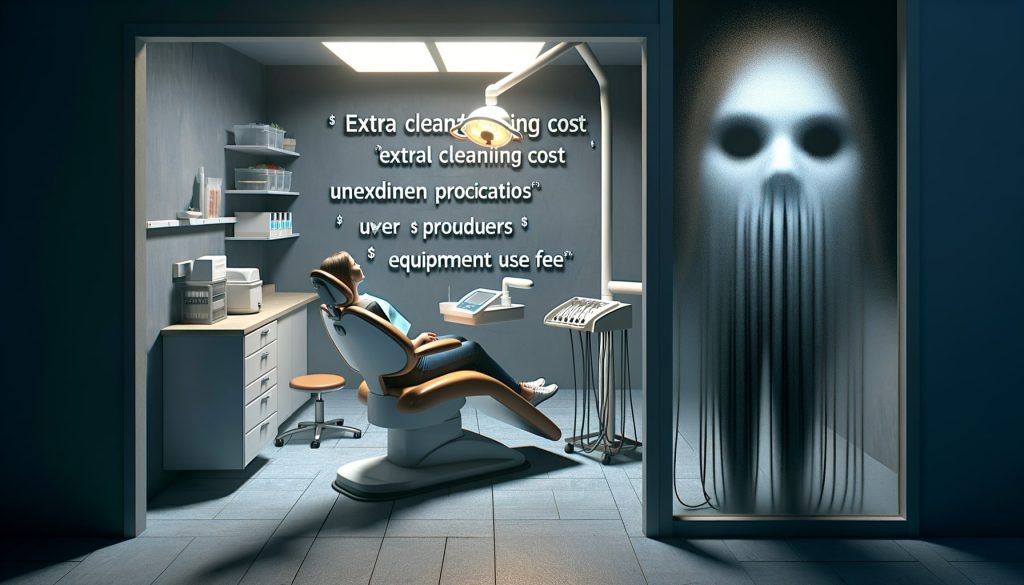Dental payment processing is an essential aspect of running a dental practice efficiently. However, many dental practices often find themselves burdened with hidden fees that can significantly impact their bottom line. These hidden fees can be frustrating and can hinder the growth and profitability of a dental practice.
In this comprehensive guide, we will explore the basics of dental payment processing, the types of fees involved, common hidden fees to watch out for, the impact of hidden fees on dental practices, and most importantly, provide tips on how to avoid these hidden fees.
Understanding the Basics of Dental Payment Processing
To effectively avoid hidden fees in dental payment processing, it is crucial to have a solid understanding of the basics. Dental payment processing involves the handling of financial transactions between dental practices and patients or insurance companies. This process typically includes the acceptance of various payment methods such as credit cards, debit cards, checks, and electronic funds transfers.
Dental payment processing can be done through various channels, including in-person transactions at the dental office, online payments through a website or patient portal, or over the phone. Regardless of the channel, dental payment processing requires the use of a payment processor, which acts as an intermediary between the dental practice and the financial institutions involved in the transaction.
Why Do Dental Practices Pay Payment Processing Fees?
Every time a patient pays for dental services using a credit card or other electronic payment methods, the payment processor facilitates the transaction by communicating between the patient’s bank and your dental practice’s acquiring bank. The processor ensures that the payment is authorized, verified, and transferred securely. In exchange for these services, they charge processing fees.
For dental practices, accepting electronic payments is essential for providing convenience to patients, but these fees can vary based on the processor and the types of transactions processed.
Types of Fees in Dental Payment Processing

Payment processors charge various types of fees, which can be difficult to identify if you’re not familiar with how they work. Some fees are more transparent, while others are hidden or disguised within contracts. Here are the main types of fees you may encounter:
1. Transaction Fees
Transaction fees are charged every time a payment is processed, and they are typically the most visible type of fee. These include:
- Per-transaction fee: A fixed amount (e.g., $0.30) charged for each transaction.
- Percentage-based fee: A percentage of the transaction amount (e.g., 2.9%) charged in addition to the fixed fee.
While these fees are usually disclosed, the total cost can add up quickly, especially if your practice processes a large volume of transactions.
2. Monthly Fees
Some payment processors charge monthly fees for maintaining your account, providing statements, and offering customer support. These fees can range from $10 to $50 or more, depending on the provider.
3. PCI Compliance Fees
PCI DSS (Payment Card Industry Data Security Standard) compliance is essential for securing patient payment data. To ensure compliance, many processors charge PCI compliance fees, either annually or monthly. These fees can be as high as $100 per year, and failure to maintain PCI compliance can result in additional penalties.
4. Chargeback Fees
If a patient disputes a charge and files for a chargeback, your payment processor may charge a chargeback fee to cover the administrative costs of handling the dispute. Chargeback fees can range from $15 to $50 per occurrence, depending on your processor.
5. Early Termination Fees
If you decide to switch payment processors before your contract ends, you may be charged an early termination fee. These fees are typically outlined in the contract and can be significant, often ranging from $200 to $500 or more.
6. Batch Fees
Some processors charge batch fees for grouping transactions together at the end of each business day. This is a small fee, typically around $0.10 to $0.30 per batch, but it can add up if you process multiple batches daily.
7. Hidden Markups on Interchange Fees
Interchange fees are set by the card networks (e.g., Visa, Mastercard) and are paid by merchants to the card-issuing bank. While these fees are non-negotiable, some processors add hidden markups to the interchange rates, inflating the overall cost of processing.
8. Assessment Fees
Assessment fees are charged by the card networks and are typically a percentage of each transaction. However, some payment processors may bundle these fees with other costs, making it difficult to see what you’re actually paying for.
9. Statement Fees
Some processors charge statement fees to provide monthly account statements. These fees can range from $5 to $15 per month and are often unnecessary, as many processors offer electronic statements for free.
How to Identify Hidden Fees in Dental Payment Processing

Hidden fees are often buried within contracts and statements, making them hard to spot. However, being aware of these fees can help you avoid overpaying. Here’s how to identify potential hidden fees in your payment processing contract:
1. Carefully Review the Contract
When choosing a payment processor, carefully read the contract and look for any vague or unclear language regarding fees. Some processors may use terms like “miscellaneous fees” or “processing fees” to hide additional costs. Be sure to ask for a breakdown of all fees before signing a contract.
2. Request a Full Fee Schedule
Ask the payment processor for a complete list of fees, including transaction fees, monthly fees, and any additional costs. A transparent processor will provide this information upfront and will explain each fee in detail.
3. Examine Your Monthly Statements
Review your monthly statements to identify any unexpected or hidden fees. Look for discrepancies between the fees disclosed in your contract and the amounts charged. If you notice any unfamiliar charges, contact your payment processor for clarification.
4. Ask About Interchange Markups
Some processors may add hidden markups to interchange fees, making it difficult to understand the true cost of each transaction. Ask your processor to disclose the exact interchange fees charged by the card networks and whether any additional markups have been applied.
5. Check for PCI Compliance Charges
While PCI compliance is necessary, some processors charge excessive fees for compliance or non-compliance. Make sure you understand the costs associated with PCI compliance and avoid processors that inflate these fees.
Common Hidden Fees to Watch Out For

While the above-mentioned fees are transparent and expected, there are several hidden fees that dental practices should be cautious about. These hidden fees can significantly impact the profitability of a dental practice if not properly understood and managed. Here are some common hidden fees to watch out for:
- PCI Compliance Fees: Payment Card Industry (PCI) compliance is a set of security standards that dental practices must adhere to when handling credit card information. Some payment processors charge additional fees for PCI compliance, which can be easily overlooked if not clearly communicated.
- Monthly Minimum Fees: Some payment processors impose monthly minimum fees, which require dental practices to meet a certain transaction volume or pay a fee to make up the difference. These fees can be burdensome for smaller practices or during slow months.
- Early Termination Fees: Many payment processors lock dental practices into long-term contracts and charge hefty fees for early termination. These fees can be hidden in the fine print of the contract and can be a significant financial burden if the dental practice decides to switch payment processors.
- Non-Qualified Transaction Fees: Non-qualified transaction fees are charged when a transaction does not meet certain criteria set by the payment processor. These fees can be higher than the standard processing fees and can be incurred due to various reasons, such as manually entering card information instead of swiping or keying in the transaction.
- Statement Fees: Some payment processors charge additional fees for providing monthly statements. These fees can be easily overlooked, especially if the dental practice receives electronic statements.
The Impact of Hidden Fees on Dental Practices

Hidden fees in dental payment processing can have a significant impact on the financial health of dental practices. These fees can eat into the practice’s revenue and reduce profitability. For smaller practices or those operating on tight margins, hidden fees can be particularly burdensome and hinder growth and investment in the practice.
Hidden fees can also lead to financial instability and cash flow issues. If a dental practice is not aware of these fees or does not properly budget for them, they can be caught off guard by unexpected expenses. This can result in delayed payments to suppliers, staff, or even the inability to invest in necessary equipment or technology upgrades.
Moreover, hidden fees can erode patient trust and satisfaction. If patients are surprised by unexpected charges on their credit card statements or receive unclear explanations for additional fees, it can lead to dissatisfaction and a negative perception of the dental practice. This can ultimately result in a loss of patients and damage to the practice’s reputation.
How to Avoid Hidden Fees in Dental Payment Processing
Avoiding hidden fees in dental payment processing requires a proactive approach. By taking the following steps, you can reduce your overall costs and ensure that you’re not paying more than necessary:
Conducting a Fee Analysis
One of the first steps in avoiding hidden fees is to conduct a thorough fee analysis. This involves reviewing the fee structure of your current payment processor and identifying any hidden or unnecessary fees. It is essential to carefully read through the contract and ask for clarification on any fees that are unclear or not explicitly mentioned.
During the fee analysis, pay attention to the interchange fees, assessment fees, processing fees, and any additional fees charged by the payment processor. Compare these fees with industry standards and reach out to other payment processors to get a sense of what fees are reasonable and negotiable.
Choosing the Right Payment Processor
Choosing the right payment processor is crucial in avoiding hidden fees. Take the time to research and compare different payment processors to find one that offers transparent pricing and fair fee structures. Look for payment processors that have a good reputation in the dental industry and have experience working with dental practices.
When evaluating payment processors, consider factors such as the overall cost, customer support, ease of integration with your practice management software, and the ability to handle different payment methods. Request detailed pricing information and ask for references from other dental practices that have used the payment processor.
Negotiating Contracts and Pricing
Once you have identified a payment processor that meets your requirements, don’t be afraid to negotiate the terms and pricing. Many payment processors are willing to negotiate fees, especially if you have done your research and can provide evidence of competitive pricing from other providers.
Negotiate for lower processing fees, waiver of certain fees, or reduced monthly minimums. Be clear about your expectations and ensure that all negotiated terms are included in the contract. It is also advisable to have a lawyer review the contract before signing to ensure that there are no hidden clauses or fees.
Educating Staff and Patients
Another crucial aspect of avoiding hidden fees is to educate your staff and patients about the payment process and potential fees. Train your staff to clearly communicate the fees associated with different payment methods and to provide accurate explanations for any additional fees that may arise.
Ensure that your staff is knowledgeable about the fee structure of your payment processor and can answer any questions or concerns that patients may have. Transparent communication with patients about potential fees can help build trust and prevent any surprises or misunderstandings.
Frequently Asked Questions (FAQs)
Q1: Are hidden fees common in dental payment processing?
Yes, hidden fees are unfortunately common in dental payment processing. Many payment processors have complex fee structures and may not clearly communicate all the fees involved.
Q2: Can I negotiate the fees with my payment processor?
Yes, it is possible to negotiate fees with your payment processor. Conduct thorough research, compare pricing from different providers, and be prepared to negotiate for fair and transparent pricing.
Q3: How can hidden fees impact my dental practice?
Hidden fees can impact your dental practice by reducing profitability, causing cash flow issues, and damaging patient trust and satisfaction. It is crucial to identify and avoid these fees to ensure the financial health and growth of your practice.
Q4: What should I look for when choosing a payment processor?
When choosing a payment processor, look for transparent pricing, good customer support, integration capabilities with your practice management software, and experience working with dental practices.
Q5: How can I educate my staff and patients about potential fees?
Train your staff to clearly communicate the fees associated with different payment methods and provide accurate explanations for any additional fees. Transparent communication with patients can help prevent surprises and build trust.
Conclusion
Hidden fees in dental payment processing can have a significant impact on the financial health and reputation of dental practices. By understanding the basics of dental payment processing, identifying the types of fees involved, and being aware of common hidden fees, dental practices can take proactive steps to avoid these fees.
Conducting a thorough fee analysis, choosing the right payment processor, negotiating contracts and pricing, and educating staff and patients are essential strategies for avoiding hidden fees. By implementing these tips, dental practices can ensure transparent pricing, maintain financial stability, and provide a positive payment experience for their patients.
